11 Antique Venetian Mirrors Collectors Still Covet
Venetian mirrors are some of the most elegant pieces ever created, admired for their hand-etched glass and graceful details. Originating from Venice, Italy, these mirrors were once symbols of wealth and artistry found in royal homes and grand palaces. Each one was carefully made by skilled artisans who shaped and decorated the glass by hand. Their charm lies in the delicate engravings and shimmering reflections that add warmth to any space.
This post may contain affiliate links, which helps keep this content free. Please read our disclosure for more info.
Venetian Cushion Mirror
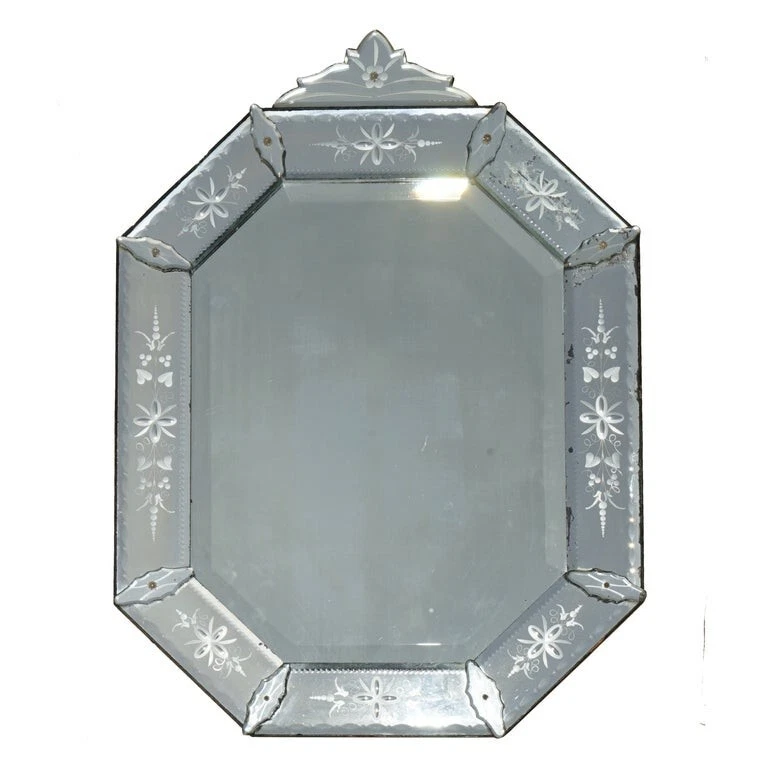
The Venetian Cushion Mirror earned its name from its distinctive beveled glass panels arranged in a padded-like form. Originating in early 18th-century Venice, it became a favorite among European nobility. The technique involved layering glass over a wooden frame to achieve depth and shimmer. Each mirror reflected a soft, luminous glow that enhanced candlelit interiors. Today, authentic Cushion Mirrors can sell for around $18,000 to $35,000.
Collectors admire these mirrors for their elegant design and the difficulty involved in their creation. The process required precision to maintain uniform beveling on every panel. Many of these mirrors were used in Venetian mansions and royal homes across Europe. Their graceful structure and antique patina make them highly collectible. Every surviving example offers a glimpse into the grandeur of 18th-century decor.
Murano Glass Venetian Mirror
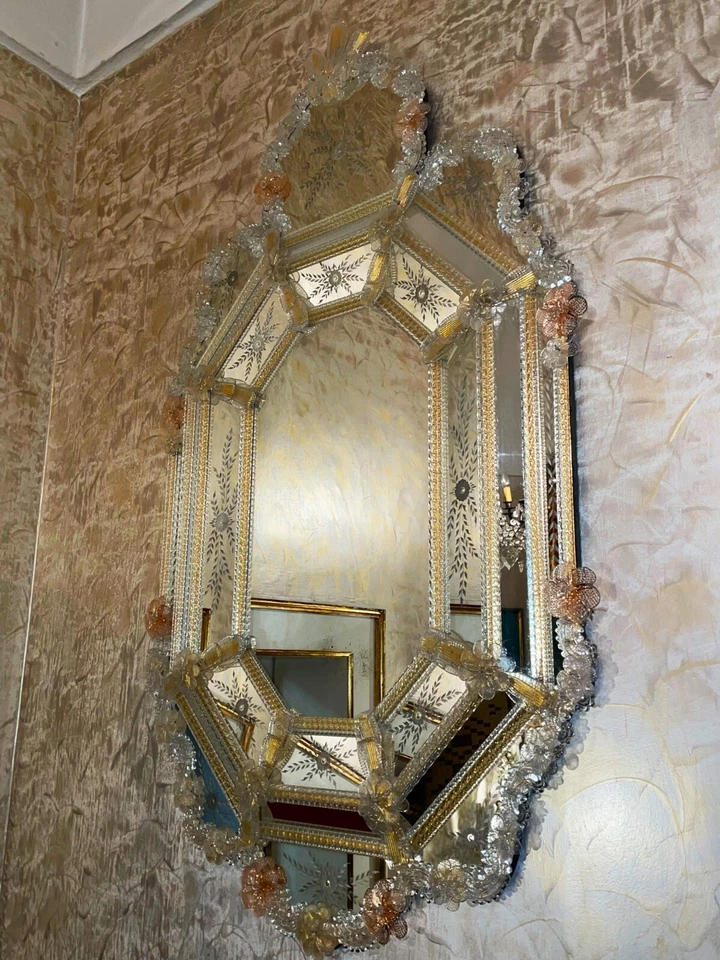
The Murano Glass Venetian Mirror from the 18th century is among the finest examples of Italian artistry. Made on the island of Murano, it showcases hand-blown glass panels delicately etched with floral motifs. These mirrors were created during a time when Venice led Europe in glassmaking innovation. Each piece was assembled by master craftsmen who combined beauty with function. Today, a well-preserved Murano Glass Venetian Mirror can reach prices between $20,000 and $40,000.
Collectors love this mirror for its shimmering clarity and intricate detail. The craftsmanship reflects the peak of Venetian glass artistry, with silvered panels framed by carved decorations. Many examples remain in European estates, making them even more desirable on the market. Their historical value continues to grow as fewer authentic pieces remain available. Owning one feels like holding a small piece of 18th-century Venice.
Etched Glass Venetian Mirror with Crest
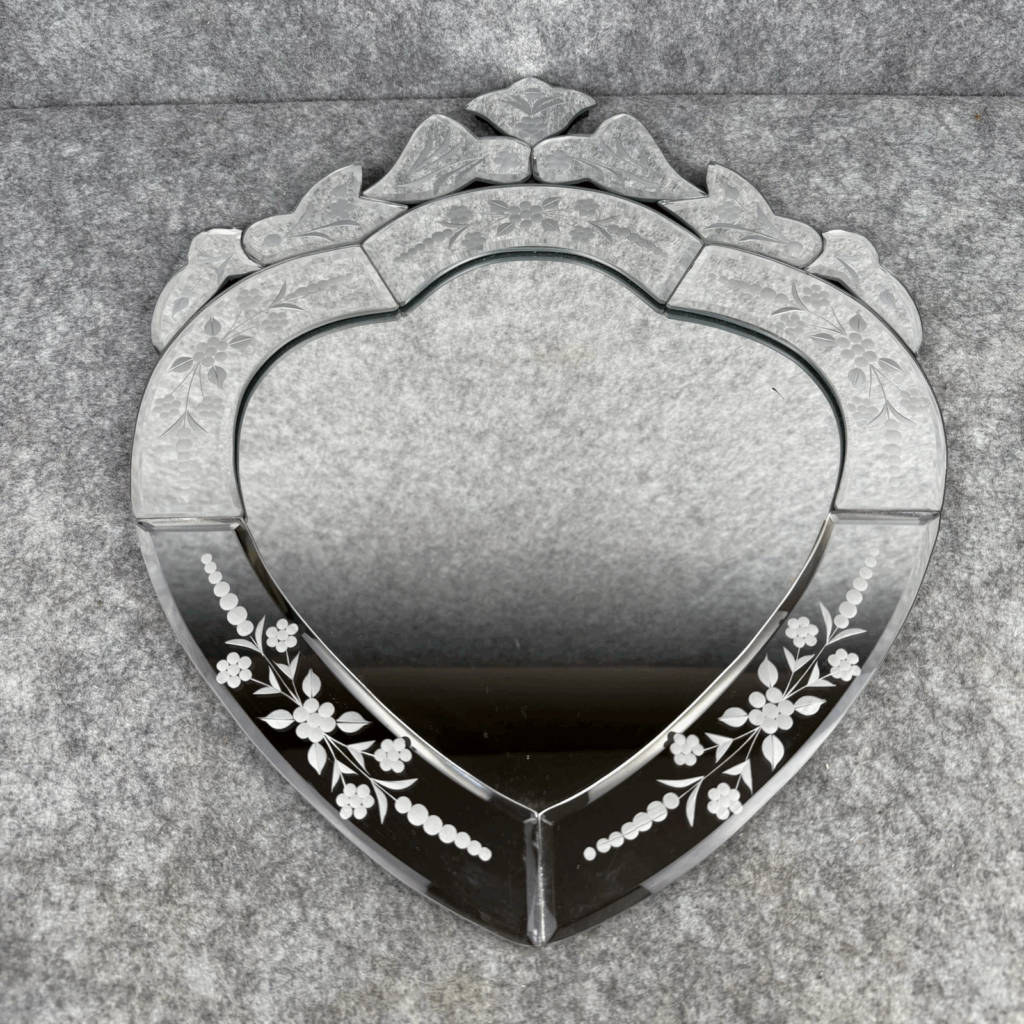
This 19th-century Venetian mirror captures the romantic spirit of post-Renaissance Venice. Distinguished by its etched glass border and floral crest, it became popular during the revival of Venetian art. The mirrored panels were hand-cut and decorated with scrolling leaves and flower patterns. Its design balanced simplicity and charm while maintaining an air of grandeur. On the current market, it can fetch between $8,000 and $15,000.
Collectors appreciate the fine detailing of its etched designs and its versatile size. These mirrors were often found in salons and parlors where they added elegance to the decor. Because they represent a later phase of Venetian craftsmanship, they are both collectible and accessible. Their reflective beauty and historical charm appeal to both new and seasoned collectors. The etched crest serves as a signature of its Venetian heritage.
Baroque Venetian Mirror
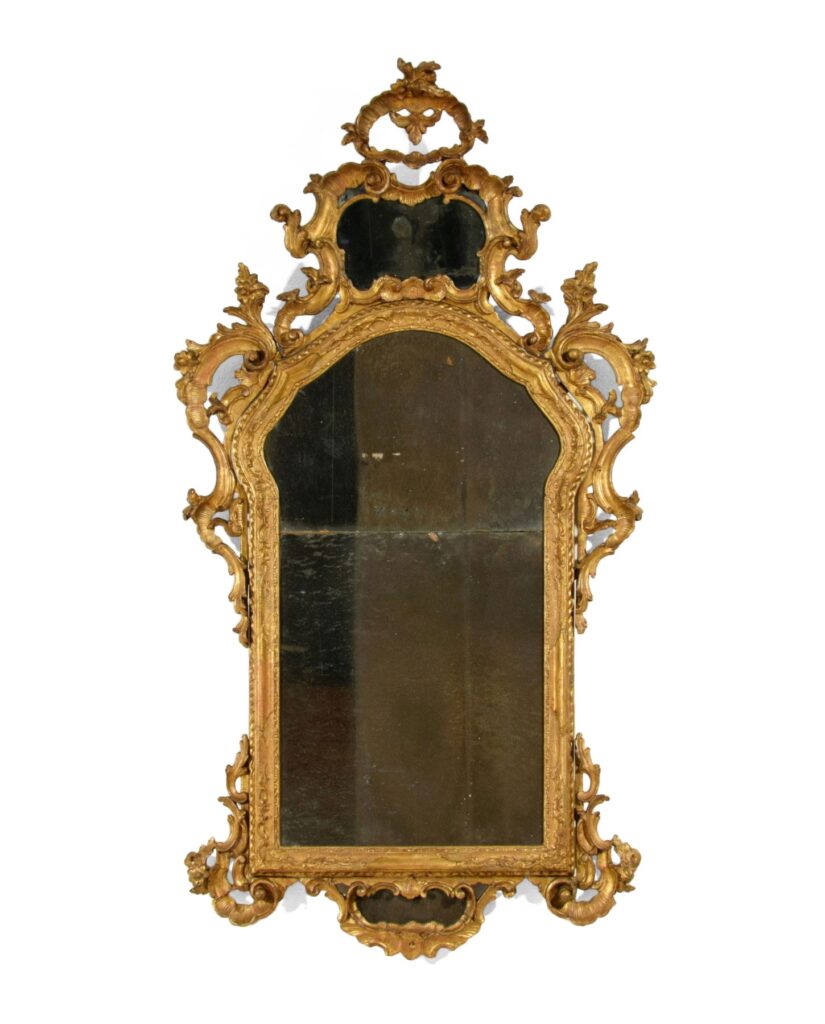
Baroque Venetian Mirrors from the late 17th century represent the earliest examples of Venetian glass artistry. They feature heavy frames, dramatic curves, and floral etchings designed to reflect both light and luxury. These mirrors were often large, used to decorate grand halls and noble residences. Made by skilled Venetian artisans, they blended art and architecture seamlessly. The current value for a well-maintained Baroque Venetian Mirror can reach $60,000.
Their commanding presence and detailed craftsmanship make them stand out in any collection. The artistry behind their design mirrors the exuberance of the Baroque period itself. Collectors treasure them for their rarity and ornate appeal. Many museums and private collectors keep these pieces preserved under strict conditions. Finding one in original form is considered an extraordinary discovery.
Oval Venetian Mirror with Floral Garland
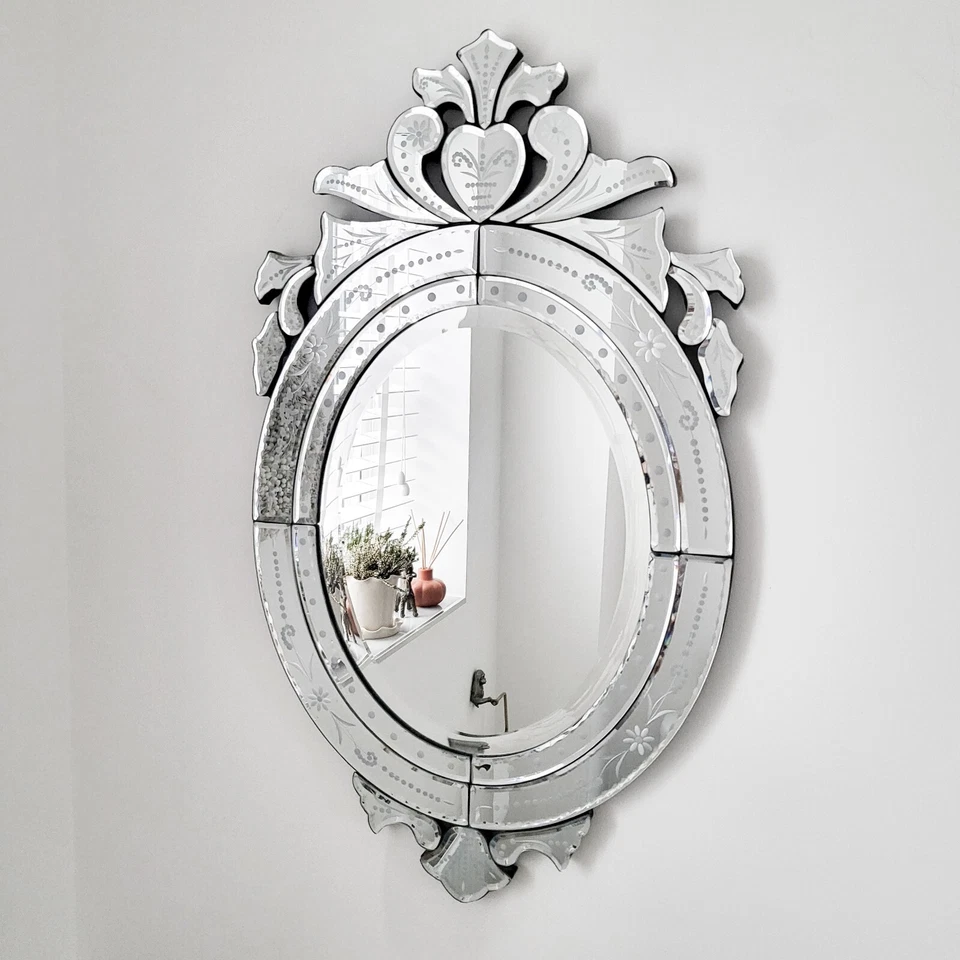
The Oval Venetian Mirror with Floral Garland was introduced in the late 19th century, embodying romantic and feminine design trends. It features delicate glass garlands shaped like flowers and leaves that encircle the frame. Each piece required multiple artisans to assemble and hand-engrave. Its oval shape was considered modern for its time while maintaining traditional Venetian artistry. The market price now averages between $12,000 and $22,000.
Collectors are drawn to this design for its graceful balance and handcrafted embellishments. The garlands symbolize the celebration of beauty and craftsmanship that defined late 19th-century Venice. These mirrors blend art with practicality, adding warmth to any interior. Many have been passed down through generations, preserving their sentimental and financial value. Their charm lies in both their history and visual delicacy.
Venetian Mirror with Murano Flower Accents
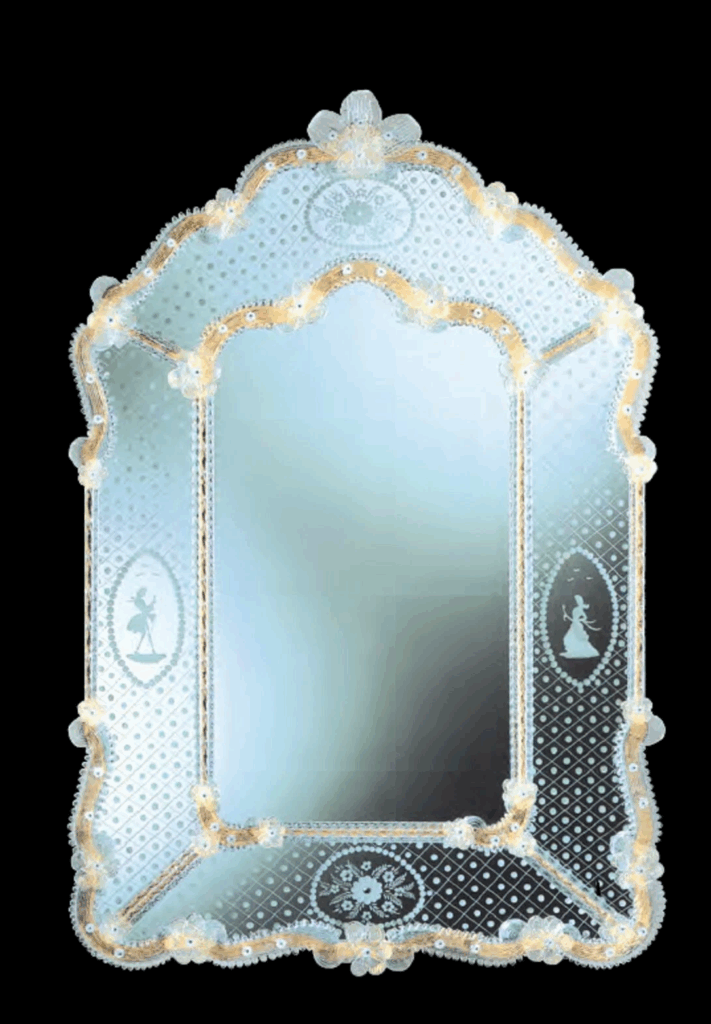
This early 20th-century Venetian mirror highlights the continued tradition of Murano artistry. Its frame is decorated with hand-blown glass flowers in soft pastel tones. These mirrors became fashionable among collectors who admired vintage elegance. Each flower was individually made and attached with precision, reflecting both artistry and care. The estimated value today ranges from $10,000 to $18,000.
Collectors find the floral accents to be an endearing nod to earlier centuries. These mirrors maintain the Venetian flair while introducing a lighter, more playful design. Their unique mix of glasswork and subtle color makes them stand out from other antiques. Many decorators still favor them for their ability to brighten interiors naturally. They represent the seamless continuity of Venetian artistry across generations.
Rococo Gilded Venetian Mirror
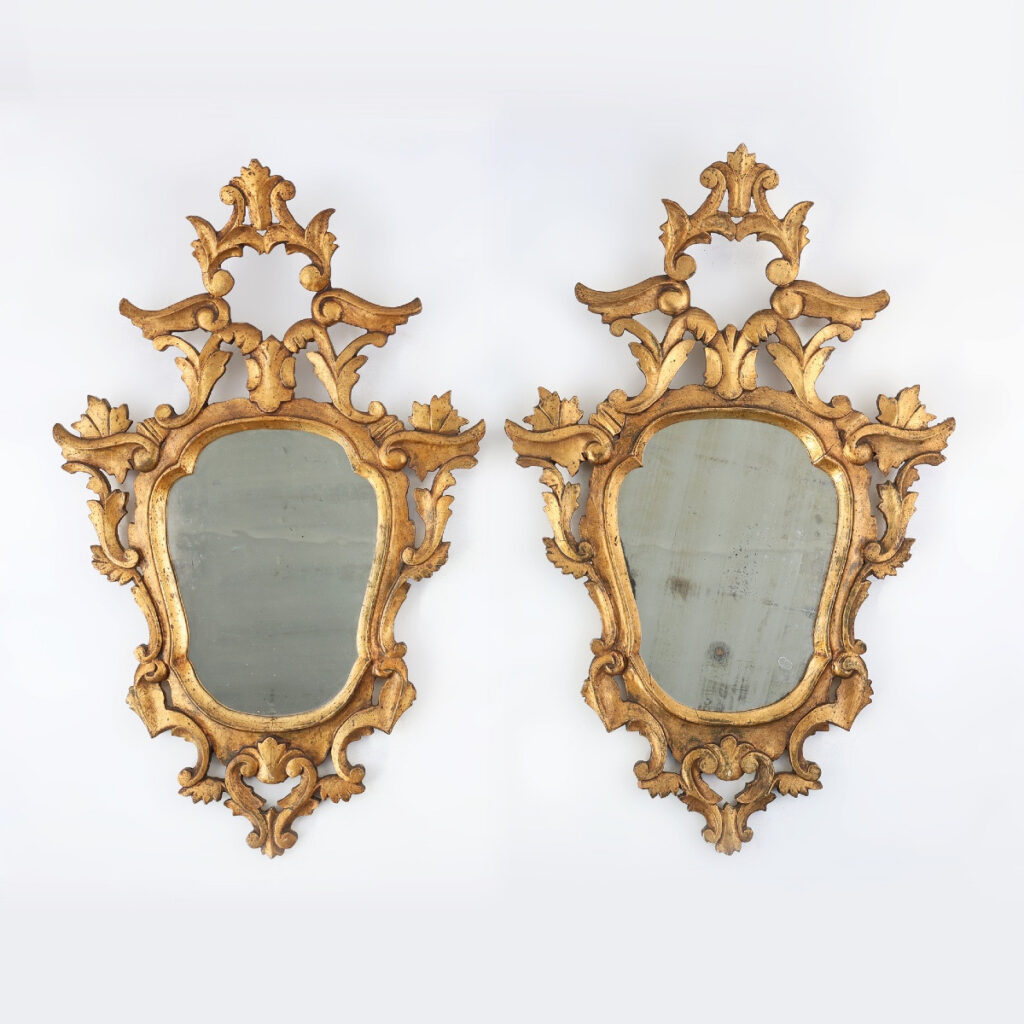
Created during the Rococo era, this Venetian mirror is a statement of opulence and artistic expression. It features elaborate gold-leaf frames, scrolling vines, and soft pastel accents typical of mid-18th-century design. These mirrors were often commissioned for aristocratic homes and palaces. Their lavish style reflected both wealth and social standing. A genuine Rococo Gilded Venetian Mirror can command between $25,000 and $50,000.
What makes these mirrors remarkable is their sculptural quality and attention to ornamental detail. Each curve and flourish was hand-carved to reflect the light beautifully. Collectors value them not just for their visual appeal but for their historical context. Because few have survived without restoration, their rarity drives continued demand. They remain timeless symbols of Venetian craftsmanship at its finest.
Rectangular Venetian Mirror with Beveled Frame
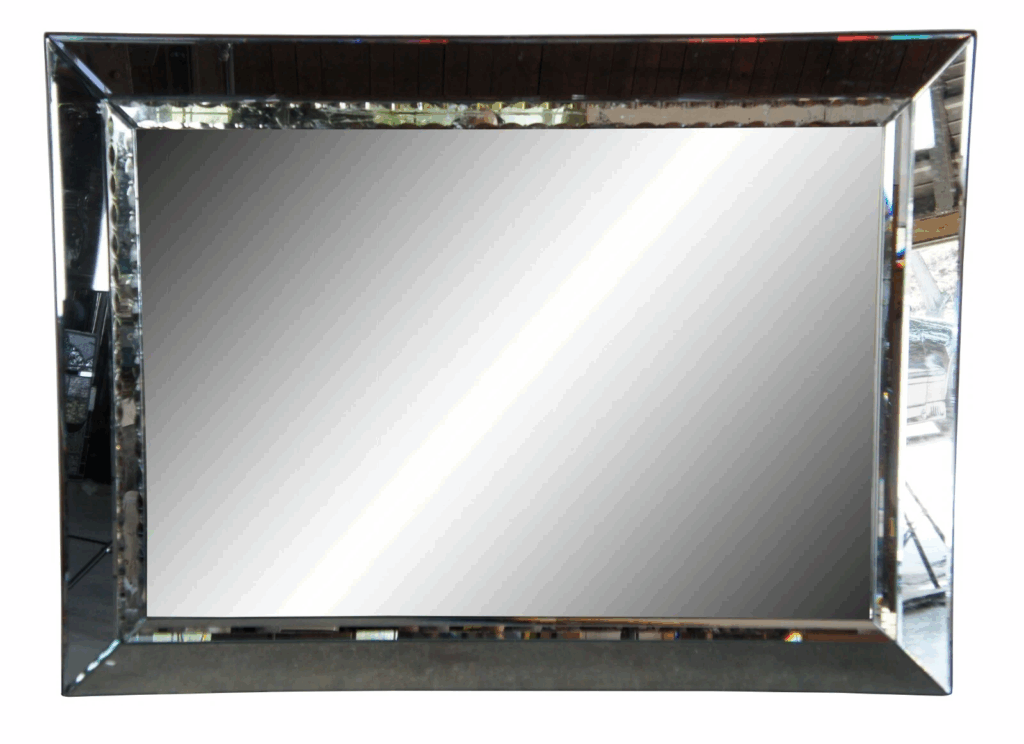
The Rectangular Venetian Mirror from the mid-19th century brought a sense of structure and refinement to home interiors. Its frame features layered beveled glass that catches and reflects light from all angles. This era marked a shift toward symmetry and simplicity while maintaining luxury. Each panel was meticulously aligned to create a perfect visual balance. Such mirrors can now be valued between $14,000 and $28,000.
Collectors enjoy this design for its timeless geometry and subtle elegance. Unlike heavily ornate Baroque mirrors, this version focuses on clarity and proportion. It fits seamlessly in both antique and modern settings. The careful craftsmanship behind each beveled edge adds to its collectability. Its understated look remains a favorite among serious antique enthusiasts.
Gothic Revival Venetian Mirror
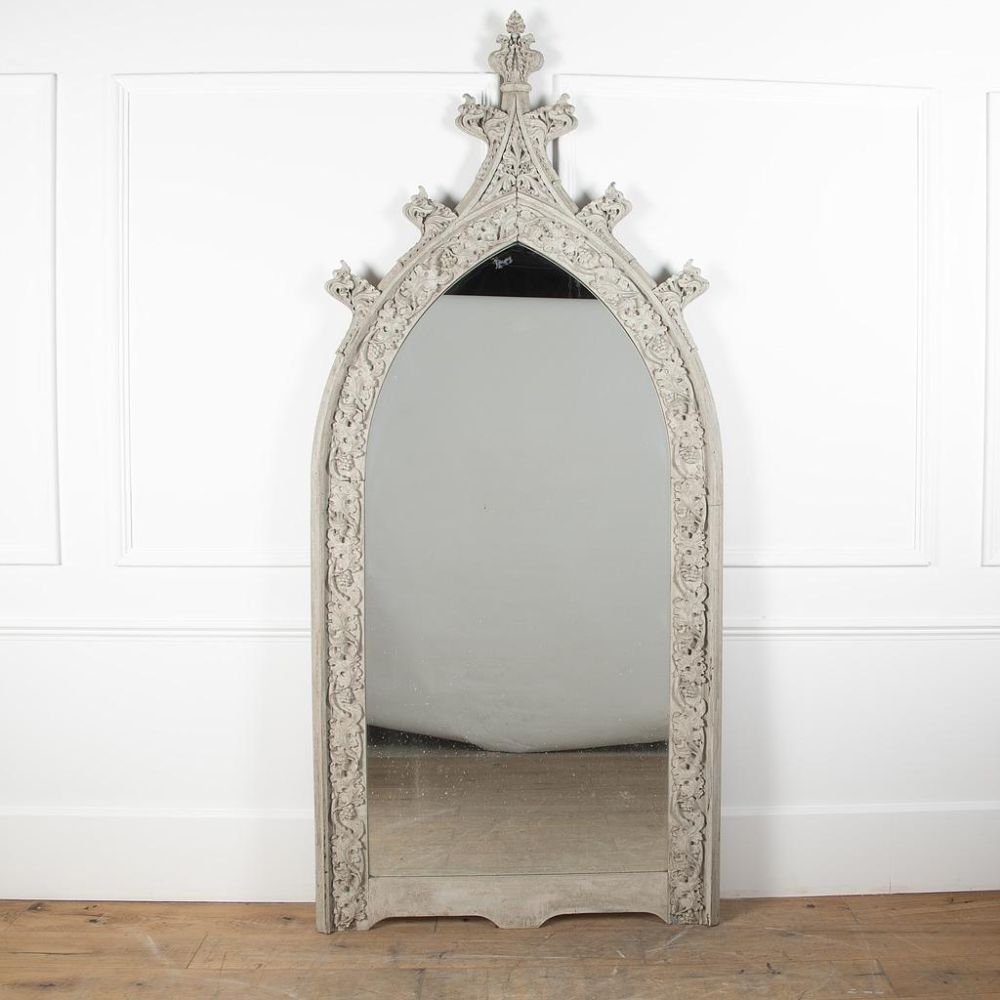
During the 19th century, Venetian artisans drew inspiration from medieval Gothic architecture. The Gothic Revival Venetian Mirror emerged with pointed arches, floral engravings, and deep etchings. These mirrors reflected a fascination with historical design while retaining Venetian glass techniques. Often found in European manor houses, they symbolized elegance and cultural prestige. Their estimated value today can exceed $25,000.
Collectors love the blend of history and craftsmanship that defines this style. The intricate glass tracery and ornamental carvings make it visually striking. Because of its architectural detail, each piece stands out as a decorative centerpiece. Many examples remain in private collections across Europe. Their rarity continues to sustain strong interest among art historians and collectors.
Venetian Trumeau Mirror
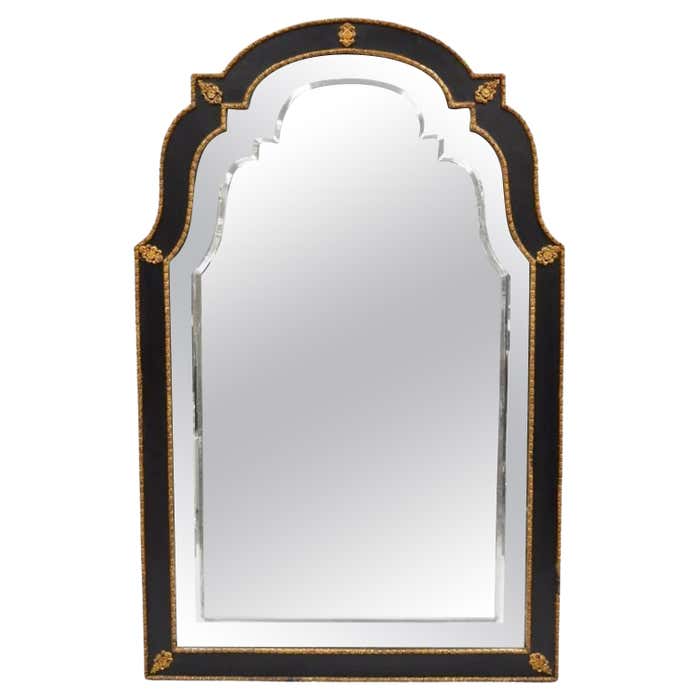
The Venetian Trumeau Mirror dates back to the mid-18th century, often featuring an upper painted panel above the glass. These mirrors were designed to hang above fireplaces in aristocratic homes. The top panel usually displayed pastoral scenes or mythological figures framed with gilded borders. Combining painting and glasswork made them stand out among decorative pieces. Well-preserved examples are worth about $22,000 to $45,000.
Collectors find the Trumeau design captivating because it merges multiple art forms. Each mirror offers insight into both Venetian and French influences of the era. The dual-material composition adds character and depth. Few remain intact today, which increases their desirability. They perfectly capture the elegance of 18th-century European interiors.
Venetian Mirror with Gold Engraved Frame
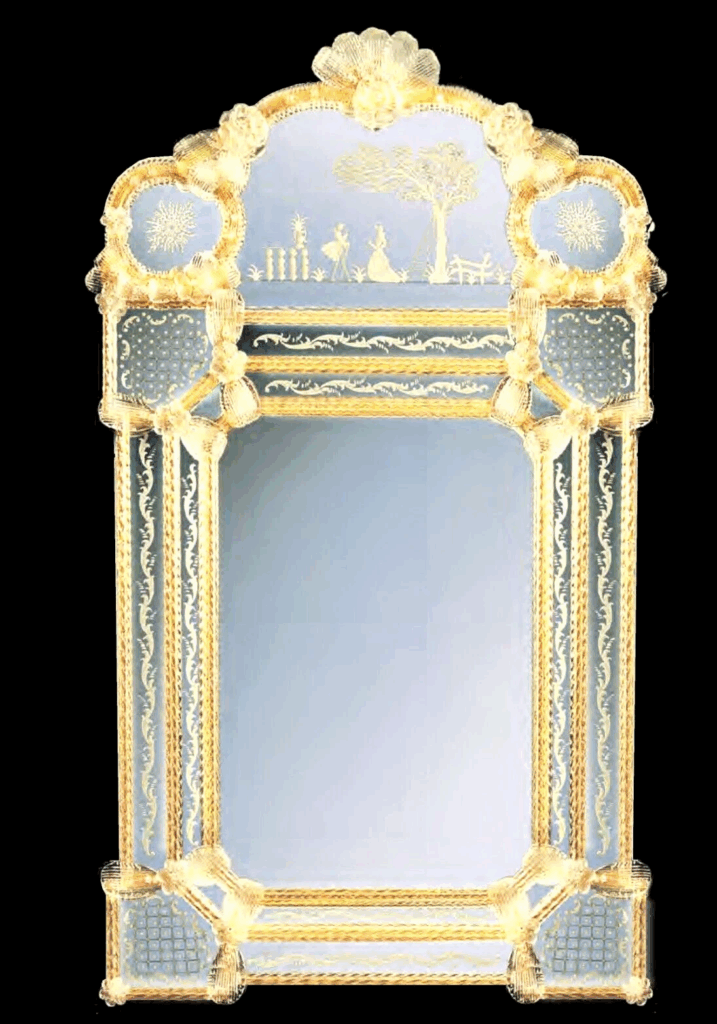
One of the earliest and most valuable types, the Gold Engraved Frame Venetian Mirror dates back to the 1600s. Crafted for wealthy Venetian patrons, it features engraved glass panels accented with gold leaf. These mirrors were symbols of prestige, often displayed in the grand halls of palaces. Each one was handcrafted in limited numbers, making them exceptionally rare today. Prices can soar beyond $80,000 for authentic pieces.
Collectors view these mirrors as treasures of early Venetian artistry. The combination of gold detailing and fine engraving reflects the height of glass innovation during the 17th century. Their historical importance and scarcity make them centerpiece items in private collections. Many museums display them as part of European decorative art exhibits. They remain enduring icons of Venetian luxury and artistic excellence.
The fascination with Venetian mirrors continues as collectors seek pieces that embody grace and heritage. Their detailed engravings and masterful construction stand as reminders of Venice’s golden age of artistry.
This article originally appeared on Avocadu.
